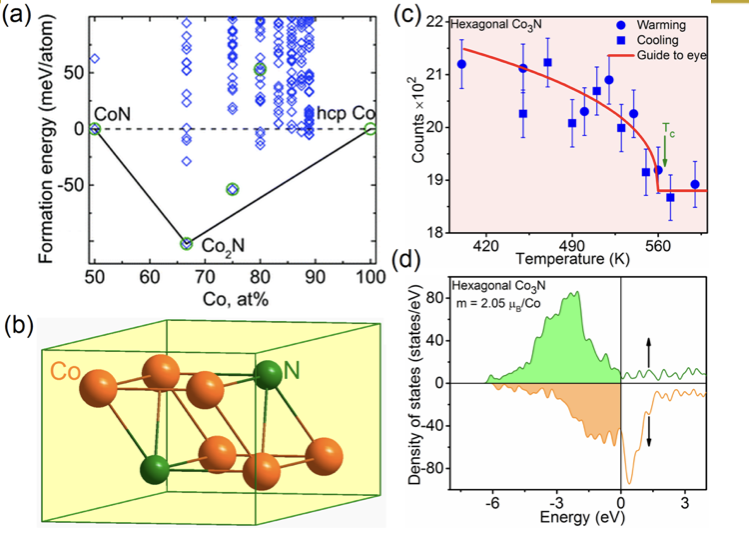Creating Novel Magnetic Compounds with Complementary Experimental and Computational Methods
The search for new magnetic materials with high saturation magnetic polarization (Js), magnetocrystalline anisotropy (K1), and Curie temperature (Tc) is important for a wide range of applications including information and energy processing.
J. Chelikowsky, K. Ho, C. Wang, D. Sellmyer, X. Xu

The search for new magnetic materials with high saturation magnetic polarization (Js), magnetocrystalline anisotropy (K1), and Curie temperature (Tc) is important for a wide range of applications including information and energy processing. When increasingly powerful computational techniques are combined with special non-equilibrium fabrication methods, the search can uncover new metastable magnetic compounds. An example of such a search is the prediction of several cobalt-nitride compounds using an adaptive genetic algorithm (AGA) (Fig. 1a). This search has assisted the synthesis of a set of new Co3N compounds, including a hexagonal structure (Fig. 1b), which exhibits an appreciable K1 = 10.1 Mergs/cm3, and a high Tc >> 550 K (Fig. 1b). Electronic-structure calculations show a magnetic moment of 2.05 μB/Co for Co3N, which is higher than that of hcp Co (1.7 μB/Co) and corresponds to Js = 15.9 kG [2]. Recently, our combined experimental and computational efforts yielded novel magnetic materials, which posses controllable quantum phase transitions [3], exhibit chiral magnetism with room-temperature skyrmions [4], and may have spintronics or quantum-information applications.